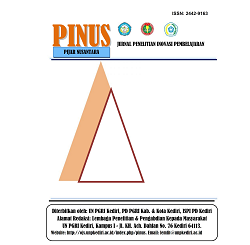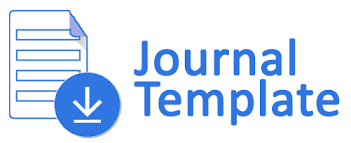Analisis Keaktifan Belajar Siswa Terhadap Model Pembelajaran Problem Based Learning (PBL) Pada Mata Pelajaran IPA Di Kelas V SD Kanisius Hasanudin Semarang
DOI:
https://doi.org/10.29407/pn.v5i1.13732Keywords:
Student Learning Activity, Problem Based Learning, ScienceAbstract
The background that drives this research is the fifth grade students of SD Kanisius Hasanudin Semarang who have very good learning activeness. Class V students are so enthusiastic when learning takes place. This can be seen from the response of students when the teacher gives small questions and students will scramble to raise their hands to answer questions from the teacher. Then the researcher wants to know whether the application of the Problem Based Learning model of learning students is more active in learning science. In addition, researchers also want to know what are the factors that influence the learning activities of fifth grade students of SD Kanisius Hasanudin Semarang. This type of research is descriptive qualitative. Data collection in this study was carried out by the method: interview, observation, questionnaire and documentation. The results of the study based on interviews with the teacher said that students were more active with the application of the Problem Based Learning learning model.
Downloads
References
Samatowa Usman. 2010. Pembelajaran IPA di Sekolah Dasar. Jakarta : PT Indeks.
Sugiyono. 2016. Metode Penelitian Kuantitatif, Kualitatif dan R&D. Bandung : Alfabeta.
Sukmadinata. 2016. Metode Penelitian Pendidikan. Bandung : PT Remaja Rosdakarya.
Widiasworo Erwin. 2017. Strategi & Metode Mengajar Siswa di Luar Kelas. Yogyakarta : Ar-Ruzz Media.
Downloads
Published
Issue
Section
License
Copyright (c) 2019 PINUS: Jurnal Penelitian Inovasi Pembelajaran

This work is licensed under a Creative Commons Attribution-ShareAlike 4.0 International License.
Authors who publish with this journal agree to the following terms:
- Copyright on any article is retained by the author(s).
- The author grants the journal, right of first publication with the work simultaneously licensed under a Creative Commons Attribution License that allows others to share the work with an acknowledgment of the work’s authorship and initial publication in this journal.
- Authors are able to enter into separate, additional contractual arrangements for the non-exclusive distribution of the journal’s published version of the work (e.g., post it to an institutional repository or publish it in a book), with an acknowledgment of its initial publication in this journal.
- Authors are permitted and encouraged to post their work online (e.g., in institutional repositories or on their website) prior to and during the submission process, as it can lead to productive exchanges, as well as earlier and greater citation of published work.
- The article and any associated published material is distributed under the Creative Commons Attribution-ShareAlike 4.0 International License









